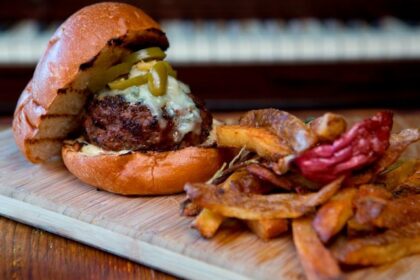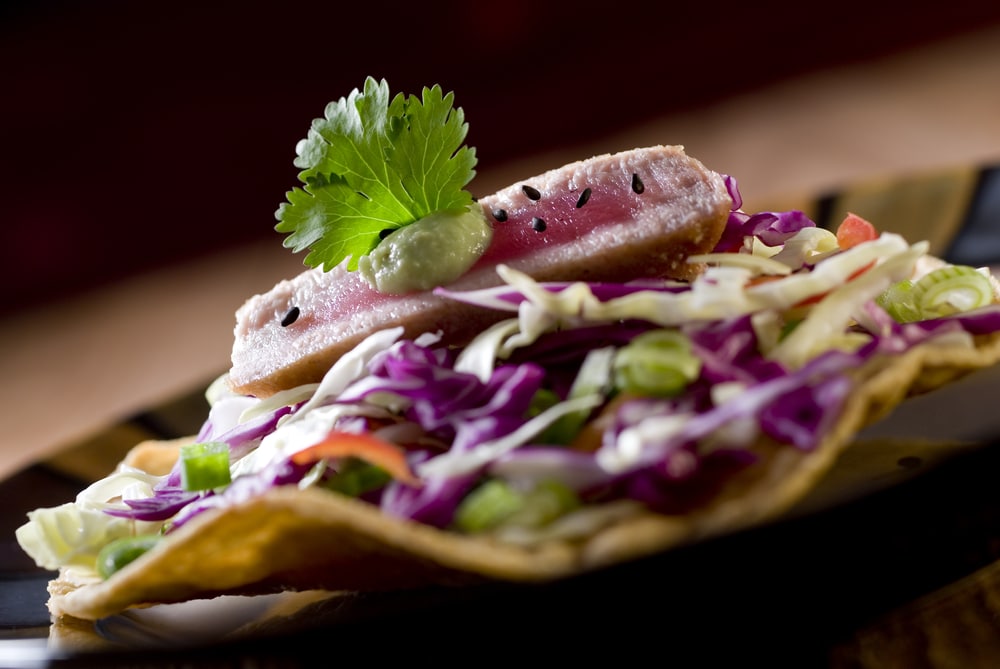
Alongside Southeast Asia and China, Latin America is without a doubt the home of some of the most sensational street eating on the planet. Forget about the grandiose gastro establishments of Oaxaca or the finicky fusion diners of Lima: it’s all about the freshly prepped, quick-grilled and hand-held in this part of the world. And you can have it all for a song. To help you plan an unforgettable food-focused trip in Central or South America, Epicure & Culture caught up with hungry traveler Jovian Smalley from Prawns For Breakfast to get the scoop on the top can’t-miss culinary pitstops. !Buen provecho!
1. Fish Tostadas From A Street Cart In Baja California, Mexico
It is generally held that the freshest, tastiest fish to be had in Mexico – if not the whole of the North American West Coast – is found in Baja California. Most foodies come down to these parts in search of melt-in-the-mouth, sensuously battered fish tacos and they are rewarded in spades at innumerable roadside gems like Taco Allan in Tijuana and McFisher in La Paz; however, if you want to venture a little deeper in your pescatorial expedition, you should probably hunt down Mariscos La Guerrerense, a humble family-run seafood cart in Ensenada, Northern Baja.
Listed by Newsweek last year as one of the world’s top 100 street-eats and lauded by Chef Anthony Bourdain, these maestros de los mariscos have been pulling huge crowds to the corner of Alvarado and 1st every afternoon since 1960. Their specialty is the mixta – a stunning little seafood still life. The catch of the day is combined with fresh tomato, onion, garlic and coriander and topped off with any number of their own mind-blowing chilli sauces. Wash a couple down with their signature version of the Mexican coctel Clamato — black clams, fish liquor, tomato sauce, a shot of chilli, sliced avocado and lime juice — and believe the hype.
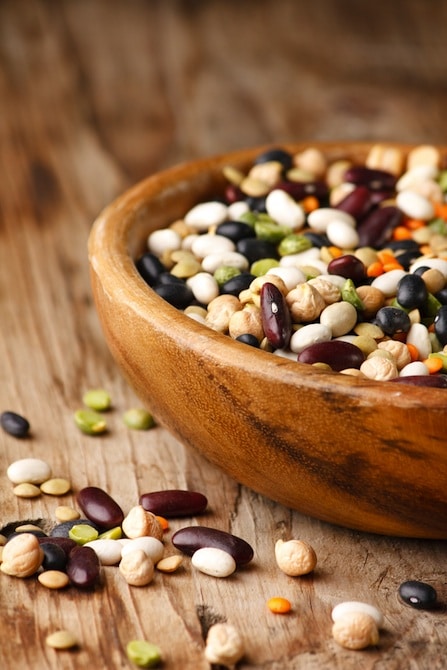
2. Vigaron At A Fast Food Shack In Granada, Nicaragua
No Central America travel guide would be complete without discussing the food in Nicaragua!
Nicaragua tends to get short shrift in the gastro-traveler’s books. I mean, take its most well-known dish, Gallo Pinto: that’s just rice and beans, right? But often the unthinking or unadventurous critic of Nicaraguan cuisine has just read the headlines and not checked the supporting facts. My advice is to stay away from the overpriced steak houses and international restaurants catering to undemanding or unadventurous gringos and head for the many street shacks and comedors serving up real, rustic Nicaraguan fare.
The most exciting street joint I ate at during my three weeks in this stunning country was at Kiosco ‘El Gordito’ (Fatty’s Shack) on Granada’s main square. The big man serves up inexpensive and hearty fast food like Chancho con Yucca (pork medallions fried with onion and garlic, citrus juices and spices) and of course his own gut-busting take on Gallo Pinto. But the signature dish you have to try at this particular shack is Vigaron (yucca with pork scratchings and pickled cabbage). Locals rave about El Gordito’s Vigaron as the best in Granada, and with its addictive combination of sweetly braised pork, crunchy crackling and unctuous, tangy pickle, it’s an unpretentious and unrivalled Nicaraguan classic.
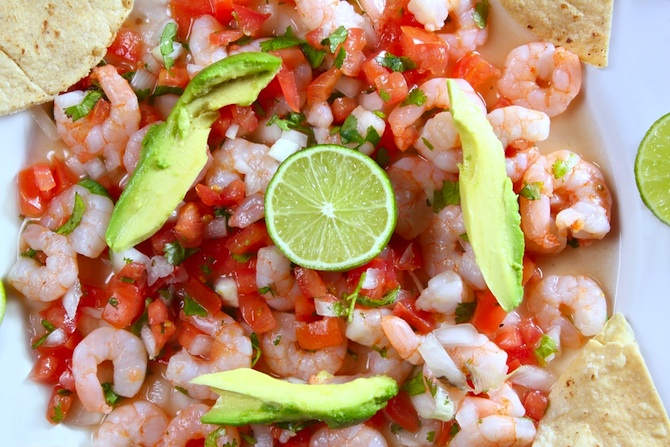
3. (Very) Fresh Ceviche de mariscos In Panama City’s Fish Market
You cannot – unless you are a vegetarian – leave Latin America without sampling ceviche. Just can’t. Peru and Ecuador both claim this dish of citrus-cured fish or seafood spiced with aji (chili peppers) for themselves, but you can find exceptional examples in Mexico, El Salvador and Panama as well. One of the big attractions of Panama City to visiting food fans is its legendary central fish market which serves some of the freshest ceviche in Central America early every morning. Yup, ceviche is a breakfast dish in these parts.
The only elements a great ceviche needs are onion, lime, cilantro and a dash of chili – not too much though, the fish is the hero ingredient here. At La Mujer de Ceviches (The Ceviche Woman) you can grab a couple of Styrofoam cups of pescado (white fish) and combinacion (seafood mix) ceviche for about $3.50USD and enjoy the intoxicating sights, sounds and smells of a fresh fish market at the top of its game. Panamanian ceviche is streets ahead of anything you will find London, Paris or New York. Get to it and get involved.
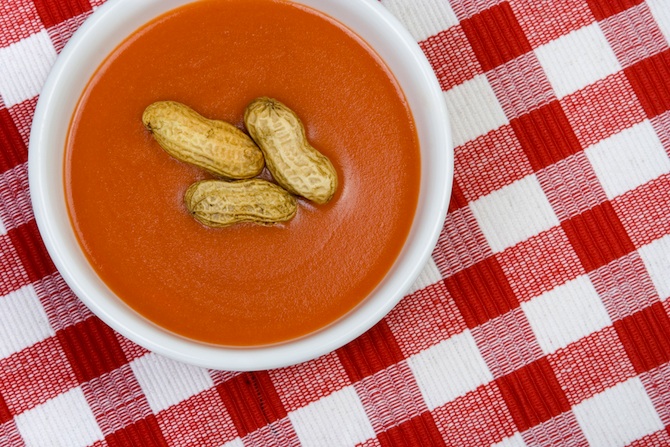
4. Sopa de Mani At A Food Market Stall In La Paz, Bolivia
There are plenty of no-holds-barred showstoppers in the Bolivian diet, from the family favorite Lechon al Horno (slow-baked pork rubbed with spices and chili) to the post-drinks classic Pique Macho: a veritable mountain of meat, chips, eggs, cheese, tomatoes, peppers onion – and anything else you care to add really. But if you want to sample something more delicate, shoot for their soups. Often served as the starter in a gut-busting four-course lunch menu, Bolivia’s many soups and broths are often ordered as a hearty meal in their own right, and the love and tenderness that goes into them hits you from the first slurp.
The most popular is Sopa de Mani (peanut soup): it combines the traditional Andean ingredient of roasted peanuts blended with beef or chicken stock, cabbage, chickpeas and noodles, spiced with aji amarillo (yellow chili pepper paste) and topped with fried potatoes or white cheese and cilantro. It’s a creamy and rich concoction, with a slight kick from the aji and an unmistakable nutty undercurrent, making it a much-loved staple around the Bolivian dining table, and in the noisy, bustling mercados of La Paz. Best accompanied by a tall glass of chicha morada – bright purple corn juice.
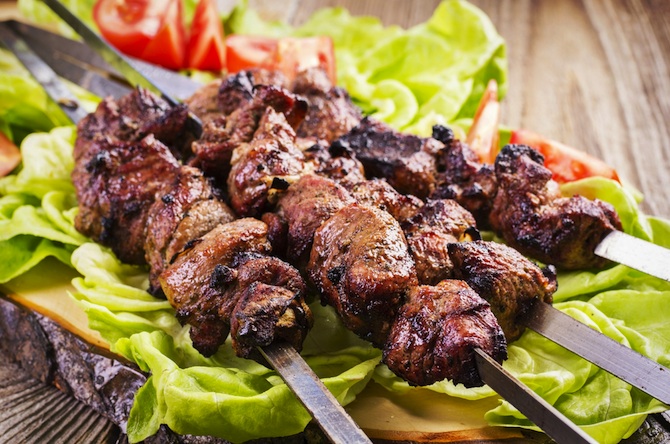
5. Anticuchos On The Streets of Cuzco, Peru
There is something indefinably magical about the waft of freshly grilled meat in the crisp night air as you head off the main square and into the beguiling side-streets of ancient Cuzco. Anticuchos are by tradition skewered beef hearts, although other cuts of beef, chicken and sausage are used. The skewers sizzle tantalizingly on the grills of rickety street-carts (anticucheras) late into the night in towns and villages across Bolivia and Peru, where they are sold to hungry locals and visitors crowned with the Andean culinary emblem: the potato.
You can often ask for a thick sauce of something herby or vinegary to be slathered on top (peanut-loving Bolivians often accompany their anticuchos with a satay sauce), although the charred, smoky meat is delicious on its own. For the perfect late-night treat put away two or three skewers with a glass of hot, steaming api – a thick, sweet beverage of corn and spices which locals drink by the half pint to keep warm through the chilly Andean evenings.
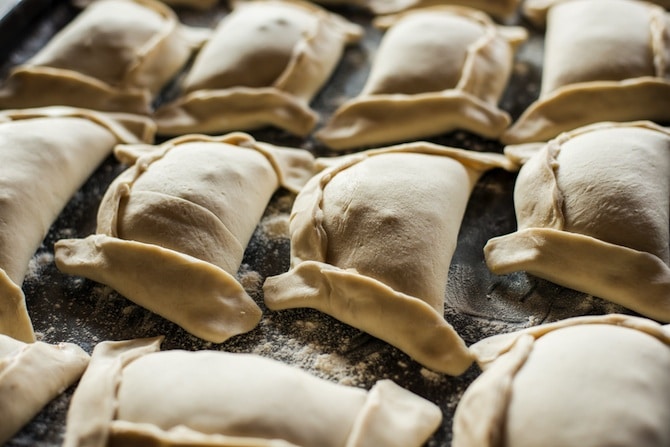
6. Oven-Baked Vegetable Empanadas In El Calafate, Argentina & Pucon, Chile
Empanadas – baked or fried hand-held pies – are perhaps one of the finest street snacks in Latin America, if not the world. And while many would argue that no one can hold a candle to the grass-reared beef grilled by Argentinian or Chilean steakhouses, I wanted to highlight a cheap and healthy herbivorous revolution going on under their noses: vegetarian empanadas. Sure, the meat filled ones will leave you more than satisfied after a long day of sight-seeing, with their delicious combination of shredded beef, salty olives, boiled egg and pastry prepared with beef dripping. But I was blown away by the simplicity and harmony of pies filled with melted cheese, tomato and spinach, finished off with a touch of cumin and a sprinkling of oregano.
I managed to hunt down some top-drawer veggie empanadas on a quite side-street in El Calafate in Argentina, as well as over the border in Chile’s Pucon, at a fantastic little pie shop called Empanadas al Horno. To my mind, the right mix of perfectly roasted or fried vegetables encased in golden-baked pastry is a marriage made in heaven. To celebrate this happy union, pick up a bottle or two of the Patagonian beer Austral, produced by the most southerly brewery in the world no less.
About The Author
Jovian Smalley has always hankered after the open road and free fork: on leaving school a grim six months cleaning McDonald’s lavatories taught him the need to expand his palate. After teaching English in China, haunting roadside noodle shacks and (nearly) traveling by rail and road from Shanghai to London, he never looked back. More recently, he and his wife Clare decided to give up the grind and travel the length of Central and South America (also overland) for ten months, recording their experiences at prawnsforbreakfast.com. You can also read Jovian’s sketch comedy project The Inappropriate Show, now archived at howinappropriate.co.uk, which he co-authored and starred in with Bransby MacDonald-Williams.
Jessica Festa
Latest posts by Jessica Festa (see all)
- A Culturally-Immersive Adventure In Mongolia’s Altai Mountains - Jul 8, 2023
- This Recipe Sharing Platform Supports Women In The Culinary Industry (Labneh Recipe Included!) - Nov 5, 2020
- Hiking The Mohare Danda Community Eco-Trek In Nepal - Jun 3, 2020
- 6 Important Questions For Choosing A Responsible Yoga Retreat - May 18, 2020
- How To Create & Grow A Profitable Blogging Business (Ethically) - Jan 18, 2020



